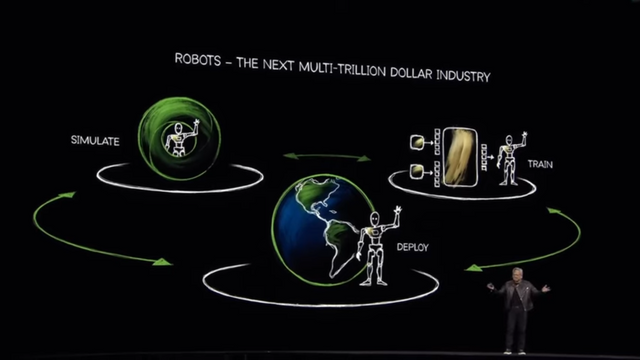Robots will dominate all human activity.
Robots will dominate all human activity.

Says Nvidia CIO Jensen Huang
Large-scale teaching of robots

And as incredible as it may seem, some still wonder, does it make sense for humanoid robots to be in factories?
Follow my publications with the latest in artificial intelligence, robotics and technology.
If you like to read about science, health and how to improve your life with science, I invite you to go to the previous publications.
If you like to read about science, health and how to improve your life with science, I invite you to go to the previous publications.
Sort: Trending
[-]
italygame (80) 3 months ago
